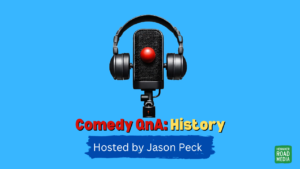I’ve got an M.C.-ing job tomorrow night at the Ashcroft Theatre in the Fairfield Halls in Croydon. It’s for a charity called Living Water Satisfies. The Ashcroft is a 750-seater theatre and is the largest that I recall playing. Even in my days as a theatre actor I think the most I’ve performed to was around the 200 mark.
What’s going to be interesting isto see how I can literally play the room. I’ve asked some of my friends for advice and here’s what they said. Ian is an actor and has performed in Pantomime, which routinely appears in large theatres in the U.K. His largest audience was 2,275 in Blackburn. Which makes my 750 chicken feed in comparison. Here’s his advice to me:
“They’re the same as playing any audience. Just make sure you play to them all. Don’t just focus on those in front of you. Remember to look up to any balconies and play to the back of the stalls, mainly with eye contact and glances down to your immediate audience. Be natural and accept that the people furthest away may not feel connected. It’s a fact and it’s not about your performance”.
And here’s what South African comedian and speaker Alistair Plint had to say:
“1) Work the whole room.
2) Stand in the light
3) Have as much fun as you can, the more fun you have the more fun they will have
4) Don’t work the stage, work the room, in the light and have fun!
Eddie Izzard leans into his audience, his eyes make lots of contact with lots of people. He has no one on one convos and he works the room in the light having fun. An audience is an audience.”
That’s some great advice guys, thanks. The thing is when it comes to working a room, as Alistair said, you cannot simply rely on the “Z” or “M” eye movements for looking at and audience as taught at places like Toastmasters. I think those techniques are good for certain sizes of audience. But when we’re talking about large theatres it makes it difficult to solely use that tool.
You have to move beyond it and play to the different sections of the audience. The Ashcroft, I know, has two lots of stalls and a circle. So part of my job will be making sure they all dig the show and are having a good time.




2 comments
“Z” is best for a large audience. Keep it simple, don’t tell jokes.
Good luck.
Excellent post and suggestions.
The Z and M eye movement are where presenters start. To connect with and work the entire audience, you need to look at people and read them. Some parts of the audience may respond in one way, another area of the audience differently. The way to tap into this is not just looking at the audience, it is looking at the individual people.
Like watching the waves, they will be constantly changing, ebbing and flowing. Helping speakers progress to this level is one of the most challenging aspects of teaching speech mastery.